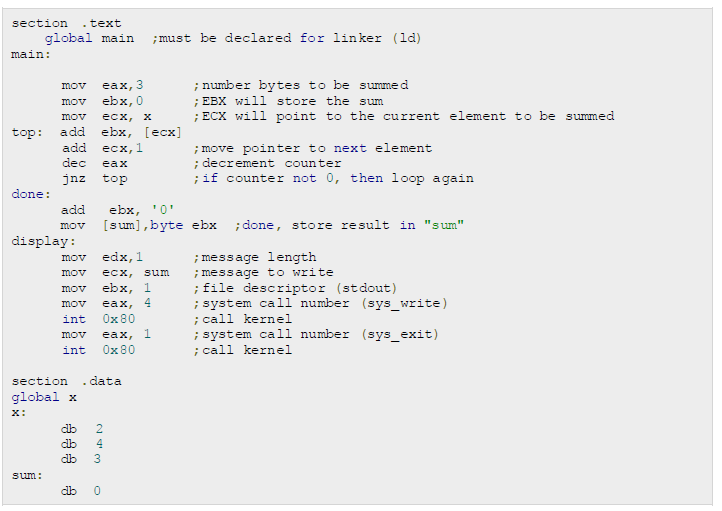
Assembly Arrays
We have already discussed that the data definition directives to the assembler are used for allocating storage for variables. The variable could also be initialized with some specific value. The initialized value could be specified in hexadecimal, decimal or binary form.
For example, we can define a word variable months in either of the following way:

The data definition directives can also be used for defining a one dimensional array. Let us define a one dimensional array of numbers.

The above definition declares an array of six words each initialized with the numbers 34, 45, 56, 67, 75, 89. This allocates 2x6 = 12 bytes of consecutive memory space. The symbolic address of the first number will be NUMBERS and that of the second number will be NUMBERS + 2 and so on.
Let us take up another example. You can define an array named inventory of size 8, and initialize all the values with zero, as:

Which, can be abbreviated as:
 Example:
Example:
The following example demonstrates the above concepts by defining a 3 element array x, which stores three values: 2, 3 and 4. It adds the values in the array and displays the sum 9:

When the above code is compiled and executed, it produces fol owing result:








